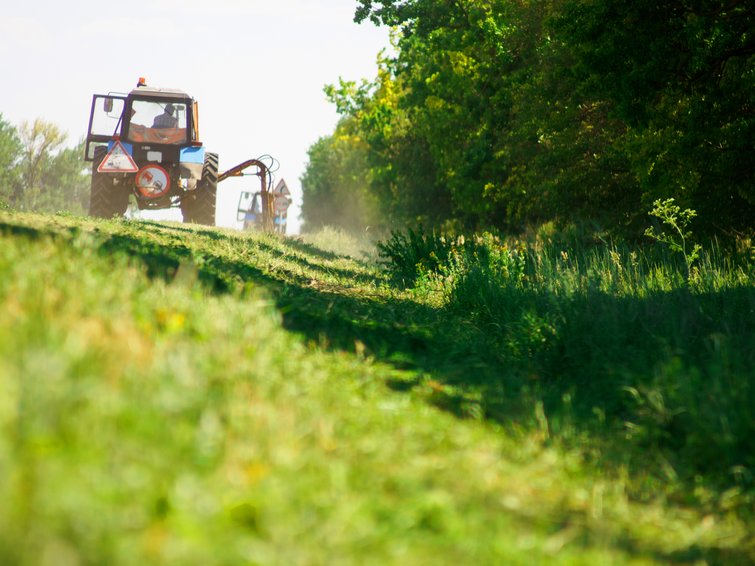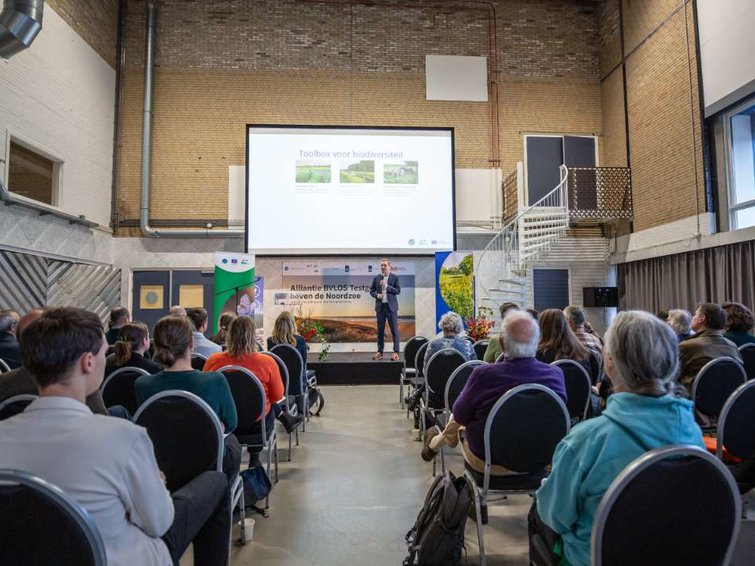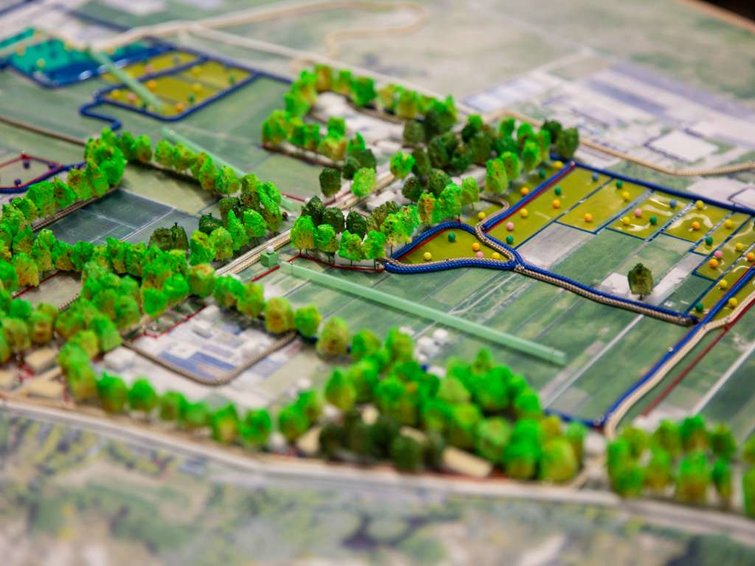BoerenNatuur and the Dutch ANLM scheme – A Collective Approach to Agricultural Nature Management

Photocredits: Stichting Deltaplan Biodiversiteitsherstel
On November 14th, the webinar ‘Collaboration with farmers – Uniting viable farming practices with nature conservation’, organised by LIFE IP All4Biodiversity and the Delta Plan for Biodiversity Restoration, took place. Seventy interested people joined the international webinar to learn more about this specific topic. Several (LIFE IP) programmes shared their findings in their search to improve nature quality in and around Natura2000 areas and beyond, whilst providing a viable and practical business model for farmers. Below you can read the report on the presentation about BoerenNatuur (FarmersNature).
Sarah Westenburg, strategic advisor at BoerenNatuur, presented the Dutch Agricultural Nature and Landscape Management (ANLM) scheme. Below, we summarize the key insights from her presentation.
What is Agricultural Nature and Landscape Management (ANLM)
Agricultural nature and landscape management in the Netherlands has been evolving since 1975. The ANLM scheme primarily aims to create and maintain habitats for target species, such as farmland birds and small mammals, to contribute to conservation goals from the Birds and Habitats Directives and Nature Restoration Law. The ANLM targets three primary target areas or landscapes: open grasslands, open croplands and green-blue veining or infrastructure (landscape elements such as hedgerows and herb-rich borders).
Key features of the ANLM scheme include:
-
Provincial Implementation: The 12 Dutch provinces are responsible for implementing the ANLM and set targets in their provincial nature management plans.
-
Collective Approach: a collective approach was introduced in 2016, which means that 40 agricultural collectives act as intermediaries between the government and farmers. Farmers must join a collective to receive ANLM payments.
-
Embedded in the CAP: The ANLM scheme is the Dutch version of the agri-environment climate measures that are part of the second pillar of the Common Agricultural Policy (CAP). This way the ANLM has access to European funding.
Currently, around 12,000 farmers participate in the scheme, managing approximately 116,000 hectares of farmland – about 6.5% of all agricultural land in The Netherlands. The Dutch National Strategic Plan foresees a growth to at least 135,000 hectares in the near future. Sarah Westenburg emphasises BoerenNatuur hopes this number grows even bigger, because the government has decided to allocate extra budget to agricultural nature and landscape management.
The Structure of ANLM
As Sarah Westenburg explained, the ANLM scheme is part of the ‘green architecture’ of the Dutch National Strategic Plan, which consists of three levels:
-
the good agricultural and environmental conditions (GAEC), aimed at achieving a basic quality;
-
the eco-scheme, aimed at applying agro-ecological practices and achieving functional agrobiodiversity. Within the eco-scheme, farmers choose a combination of eco-activities to earn enough points ánd monetary value in order to qualify for an eco-premium;
-
the ANLM scheme, which aims to establish a good quantity ánd quality of habitats for certain species that depend on the agricultural area. Those are primarily the target species of the Birds- and Habitats Directives, but also target species that provinces have included in their nature management plans.
The ANLM follows a Plan-Do-Check-Act (PDCA) cycle for continuous improvement:
Plan: The national and provincial governments set targets in the National Strategic Plan and the provincial nature management plans. At the area level, the 40 agricultural collectives draw up an area plan to meet the targets and enter into contracts with farmers to carry out the necessary management practices.
Do: Farmers execute the management practices.
Check: Area coordinators from the agricultural collectives monitor and guide farmers to ensure the adherence to and effectiveness of management practices. There are regular audits and collectives also establish an inspection protocol and committee themselves. Random checks (field visits) are carried out by the national supervisory body. Agricultural collectives annually report their progress to their province.
Act: Through continuous monitoring adaptive management is implemented. When necessary, adjustments are made.
Important developments
Two recent developments will impact the ANLM’s future:
-
Nature Restoration Law: This European regulation, which came into force in August 2024, will influence ANLM goals. This regulation includes an article on agricultural ecosystems as well as pollinators. This regulation will likely expand the role of the ANLM because the scheme is a logical intervention to help achieve the goals of the law. The exact impact has yet to be determined through the National Nature Restoration Plan the government will have to draw up.
-
Increased funding: The newly formed Dutch government’s commitment to spend €500 million annually on 'agricultural nature management and ecosystem services' (which encompasses more than the ANLM scheme) signals a promising expansion of the scheme. A detailed plan for allocating these funds will be discussed in December.
Challenges and opportunities
Sarah Westenburg emphasised that while the ANLM scheme has achieved significant progress, expansion is necessary to meet the ambitious biodiversity goals. However, the effectiveness of the scheme is dependent on:
-
Sufficient scale, intensity and coherence of management practices.
-
Structural and adequate financing to drive large-scale change.
-
Supportive and aligned policies: alignment with policies on water, soil, and predation management is essential to enhance the scheme’s impact.
-
Stakeholder contribution: Other stakeholders in agriculture and nature conservation must actively support and contribute.
Sarah Westenburg highlighted the need for structural financing beyond the CAP’s seven-year cycle. Longer-term contracts, potentially up to 20 years, are currently under discussion, as well as higher - more competitive - payments. Both are much needed to provide financial stability, allowing farmers to contribute to biodiversity goals.
Question: How flexible are CAP regulations to support ANLM goals?
Answer by Sarah Westenburg: “In my opinion the current rules are interpreted too strictly with respect to the public services that farmers deliver through the ANLM. At the same time, I also see a need to change to rules to better accommodate the delivery of these public services. It's key that the societal value of the public services is recognized and reflected in the payments.”
Question: What role does agroforestry play in ANLM?
Answer by Sarah Westenburg: “Agroforestry is implicitly included in the ANLM through the landscape management that is a part of the ANLN. However, there are no management packages yet that are specifically tailored to agroforestry. We are working on this.”
Question: How can the Corporate Sustainability Reporting Directive (CSRD) incentivize change?
Answer by Sarah Westenburg: “While the CSRD is promising, it only requires businesses to report on sustainability; it doesn't necessarily incentivize businesses to achieve improvements. Sustainability agreements between the different parties involved in the food chain to pay farmers a fair price can have much more impact.”
The Dutch ANLM scheme, with the collective approach at its heart, demonstrates a unique model for the integration of sustainable farming and nature conservation. By scaling up and intensifying the scheme through long-term adequate financing, and by fostering collaboration between public and private parties, the ANLM scheme has the potential to significantly contribute to important societal goals as well as the livelihood of farmers.
Check out the other reports and presentations of this webinar








